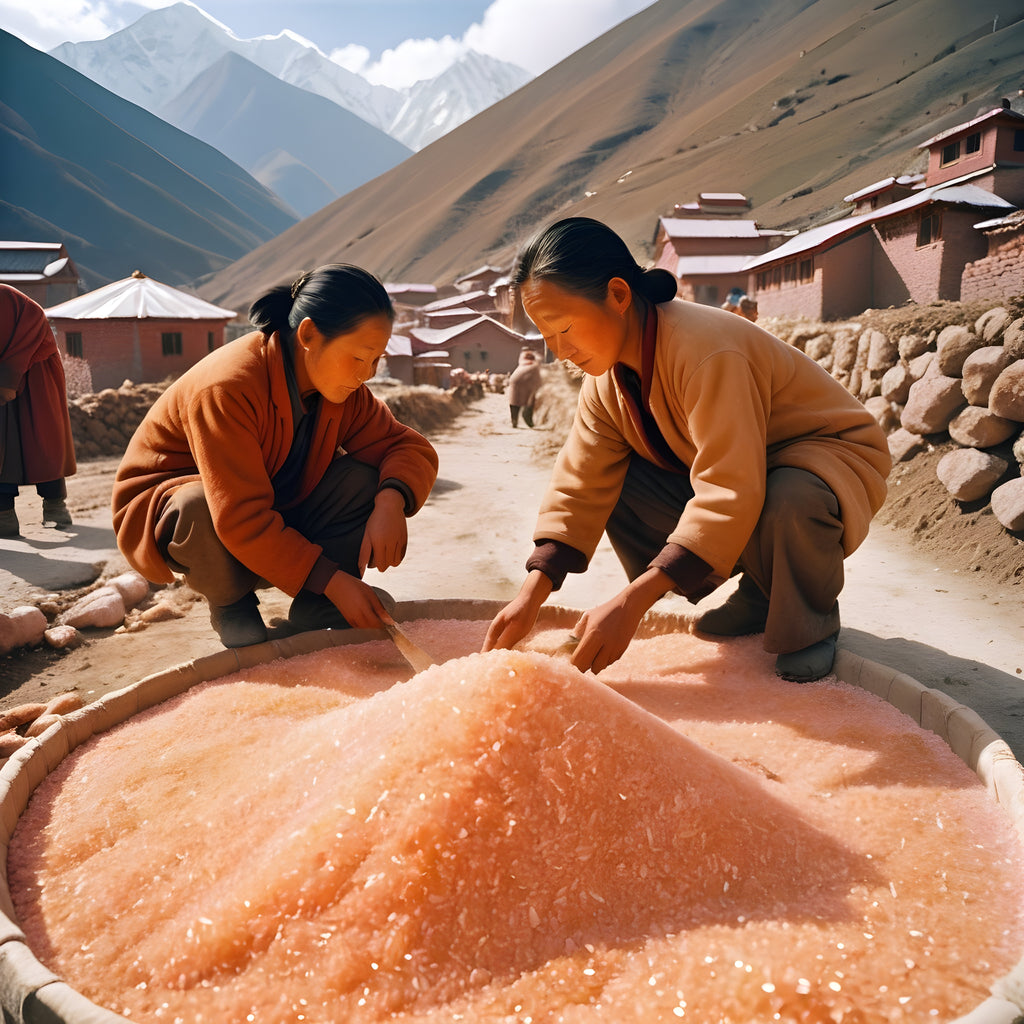
Can You Use Pink Himalayan Salt For Piercing?

If you're someone who's into piercings, you know how crucial it is to take care of them properly. After all, a piercing is essentially an open wound, and it requires the right care to heal well and avoid infections. One popular natural remedy that's been gaining attention in the piercing community is **pink Himalayan salt**. But can you really use it for piercing? Let's dive into the details.
## Understanding Pink Himalayan Salt
Pink Himalayan salt is a type of rock salt that's mined from the Punjab region of Pakistan. It gets its pink hue from the presence of trace minerals, including iron oxide. This salt is often praised for its purported health benefits, which range from improved hydration to better respiratory function. Due to its mineral content, some people believe that it may also have antimicrobial properties, making it suitable for various applications, including piercing care.
## The Role of Salt in Piercing Aftercare
Before we delve into whether pink Himalayan salt is suitable for piercing, let's understand why salt is commonly recommended for piercing aftercare. When you get a new piercing, your body's natural response is to form a protective layer of skin around the jewelry. However, this process can sometimes trap bacteria and debris, leading to infection. Saltwater soaks or saline solutions are often recommended because they help to cleanse the area, reduce swelling, and promote healing.
## Is Pink Himalayan Salt Safe for Piercings?
While pink Himalayan salt is touted for its natural properties, it's essential to consider its suitability for piercing aftercare. The truth is, **any type of salt can be irritating to an open wound**, including piercings. While some people may swear by pink Himalayan salt for piercing care, it's crucial to proceed with caution.
One potential concern is the purity of the salt. Pink Himalayan salt is often marketed as being more natural and less processed than table salt. However, without proper quality control measures, it's challenging to guarantee its purity. Impurities in the salt could introduce bacteria or other contaminants, potentially leading to infections or other complications.
Additionally, while pink Himalayan salt does contain trace minerals, there's limited scientific evidence to support its effectiveness in preventing infections or promoting healing in piercings. While some anecdotal evidence may suggest otherwise, it's essential to rely on scientifically-backed methods for piercing aftercare.
## Best Practices for Piercing Aftercare
So, what's the best approach to piercing aftercare? While pink Himalayan salt may have its enthusiasts, most piercing professionals recommend sticking to saline solution or saline wound wash for cleaning piercings. These products are specially formulated to mimic the body's natural fluids, making them gentle yet effective for cleansing wounds.
Here are some tips for proper piercing aftercare:
1. **Cleanse the piercing twice a day**: Use a saline solution or saline wound wash to clean the area around your piercing gently. Avoid using harsh soaps or alcohol-based products, as they can dry out the skin and irritate the piercing.
2. **Avoid touching the piercing**: As tempting as it may be, avoid touching your piercing with dirty hands. Touching the piercing can introduce bacteria and increase the risk of infection.
3. **Don't remove the jewelry**: Unless instructed by your piercer or a healthcare professional, leave the jewelry in place during the healing process. Removing the jewelry prematurely can disrupt the healing process and lead to complications.
4. **Monitor for signs of infection**: Keep an eye out for any signs of infection, such as excessive redness, swelling, pain, or discharge. If you notice any of these symptoms, contact your piercer or a healthcare professional for advice.
In Conclusion
While pink Himalayan salt may seem like a natural solution for piercing aftercare, there's limited scientific evidence to support its effectiveness. When it comes to caring for your piercings, it's essential to stick to proven methods, such as saline solution or saline wound wash. Remember to always consult with your piercer or a healthcare professional if you have any concerns about your piercing. By following proper aftercare guidelines, you can help ensure a smooth and successful healing process for your piercing.
## Understanding Pink Himalayan Salt
Pink Himalayan salt is a type of rock salt that's mined from the Punjab region of Pakistan. It gets its pink hue from the presence of trace minerals, including iron oxide. This salt is often praised for its purported health benefits, which range from improved hydration to better respiratory function. Due to its mineral content, some people believe that it may also have antimicrobial properties, making it suitable for various applications, including piercing care.
## The Role of Salt in Piercing Aftercare
Before we delve into whether pink Himalayan salt is suitable for piercing, let's understand why salt is commonly recommended for piercing aftercare. When you get a new piercing, your body's natural response is to form a protective layer of skin around the jewelry. However, this process can sometimes trap bacteria and debris, leading to infection. Saltwater soaks or saline solutions are often recommended because they help to cleanse the area, reduce swelling, and promote healing.
## Is Pink Himalayan Salt Safe for Piercings?
While pink Himalayan salt is touted for its natural properties, it's essential to consider its suitability for piercing aftercare. The truth is, **any type of salt can be irritating to an open wound**, including piercings. While some people may swear by pink Himalayan salt for piercing care, it's crucial to proceed with caution.
One potential concern is the purity of the salt. Pink Himalayan salt is often marketed as being more natural and less processed than table salt. However, without proper quality control measures, it's challenging to guarantee its purity. Impurities in the salt could introduce bacteria or other contaminants, potentially leading to infections or other complications.
Additionally, while pink Himalayan salt does contain trace minerals, there's limited scientific evidence to support its effectiveness in preventing infections or promoting healing in piercings. While some anecdotal evidence may suggest otherwise, it's essential to rely on scientifically-backed methods for piercing aftercare.
## Best Practices for Piercing Aftercare
So, what's the best approach to piercing aftercare? While pink Himalayan salt may have its enthusiasts, most piercing professionals recommend sticking to saline solution or saline wound wash for cleaning piercings. These products are specially formulated to mimic the body's natural fluids, making them gentle yet effective for cleansing wounds.
Here are some tips for proper piercing aftercare:
1. **Cleanse the piercing twice a day**: Use a saline solution or saline wound wash to clean the area around your piercing gently. Avoid using harsh soaps or alcohol-based products, as they can dry out the skin and irritate the piercing.
2. **Avoid touching the piercing**: As tempting as it may be, avoid touching your piercing with dirty hands. Touching the piercing can introduce bacteria and increase the risk of infection.
3. **Don't remove the jewelry**: Unless instructed by your piercer or a healthcare professional, leave the jewelry in place during the healing process. Removing the jewelry prematurely can disrupt the healing process and lead to complications.
4. **Monitor for signs of infection**: Keep an eye out for any signs of infection, such as excessive redness, swelling, pain, or discharge. If you notice any of these symptoms, contact your piercer or a healthcare professional for advice.
In Conclusion
While pink Himalayan salt may seem like a natural solution for piercing aftercare, there's limited scientific evidence to support its effectiveness. When it comes to caring for your piercings, it's essential to stick to proven methods, such as saline solution or saline wound wash. Remember to always consult with your piercer or a healthcare professional if you have any concerns about your piercing. By following proper aftercare guidelines, you can help ensure a smooth and successful healing process for your piercing.


















